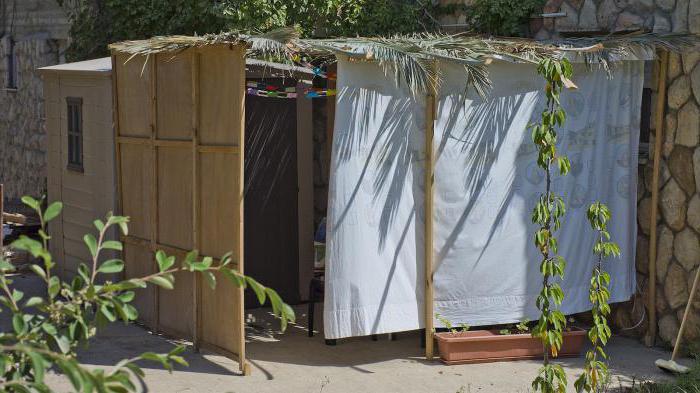Any engineer who wants to be a true professional in his field must clearly understand what needs to be classified as dangerous and what belongs to the group of especially dangerous objects. At the same time, it is no secret that it is extremely important for designers and builders to navigate these concepts - this not only results from their work, but also the lives of many people. The legislation of our country contains a complete list of particularly dangerous facilities, regularly amending this list. It is important to keep abreast of the latest news in order to maintain professionalism.
general information
At present, the level of responsibility assigned to employees depends on whether the object is particularly dangerous or in a lower risk group. The examination procedure for official documentation on the project is somewhat different: you need to focus on the group where the object belongs.
According to experts, it is not difficult to separate dangerous and especially dangerous objects; there is a set of set criteria for compliance with which it is necessary to check a specific project. The greatest force in identifying a category belongs to the provisions set forth in the 116th Federal Law. The study should begin with the first paragraph of the second article.

About terminology
It is customary to classify the territory of an enterprise, workshop, site, area, other object as hazardous if it belongs to one of the categories listed in the appendix to the Federal Law. The list is called exhaustive. If some object is not indicated here, although intuitively a specific person wants to classify it as dangerous, it is necessary to be guided by the letter of the law.
A classic example: energy objects characterized by increased voltage. Those in the application are not mentioned, therefore, do not officially belong to the category of dangerous. Of course, sometimes this may seem to run counter to common sense, and employees working with electricians rank the sites as dangerous. But the classification only on the basis that the operating current is greater than the commonly used 220 V is not a reason to classify the site as dangerous or especially dangerous objects.
Worse and worse
It can be assigned to the class of especially dangerous objects if they belong to the group listed in the 40th article of the Civil Code. This normative act contains justifications that allow attributing a certain site to the indicated category or to the number of unique objects. Here, the terminology is considered, it is explained what is customary to understand as part of the definition.

You must be aware that the especially dangerous is not a synonym for technical complexity or uniqueness, you can belong to one group and not belong to another. The list presented in this law is a rather lengthy list, but it does not include all possible options. In particular, sometimes especially dangerous facilities include facilities necessary to provide communications, but exactly the same sites in another region may no longer belong to this category. The specific approach is determined by local laws introduced at the regional level.
Dangerous: what is this bird?
The law regulates that objects in which hazardous substances are involved belong to this class. At the same time, various processes are considered: formation, application, manufacture, movement, destruction. In a word, a full production cycle, if at least one of its stages takes place within the enterprise, you can safely classify it as dangerous.
Flammable gases are considered to be dangerous, under normal pressure conditions, when interacting with air, they can easily catch fire, as well as those for which the boiling point is 20 degrees or less. These include substances that can support the combustion process, provoking the ignition of other compounds. Dangerous include toxic, explosive, combustible components and substances hazardous to the environment.
And what else?
Territories are called dangerous where the work sites are designed using equipment that supports high pressure (0.07 MPa or more) and temperature (115 degrees for water). The criterion for classification as dangerous will be the presence of stationary mechanisms for lifting goods, escalators, funiculars and cable cars. If the enterprise works with colorimetric, ferrous metals in the form of melts or alloys created using the appropriate melts, if the works belong to the category of mining, are associated with the enrichment of minerals, underground, then such conditions are also considered dangerous.

Danger increases
Particularly dangerous, technically complex and unique objects are no less extensive group, also considered by the current federal legal standards with a high level of detail. It is mentioned that it is possible to classify as LLC (especially dangerous objects) all those sites where peaceful atom is used. This applies to nuclear technology, long-term locations of components, materials, waste.
Specific rules must obey work at especially dangerous facilities from the hydraulic engineering category. This applies to the 1st, 2nd category of complexity. The division into groups is determined by the norms of the existing legal acts that describe what methods ensure the safe functioning of hydraulic engineering in our country.
Far worse!
Particularly dangerous construction projects include the metro, railway (public infrastructure elements), infrastructure related to aviation, and the space sector. It is customary to classify power lines and other household facilities into this category, where the voltage reaches 330 kV and exceeds this value.

Particularly dangerous capital construction projects include those involved in the communications sector. We are only talking about technically evaluated as complex structures. It is necessary to take into account legislative standards designed specifically for sites, buildings, objects used to implement communications. Additionally, especially dangerous, technically complex capital construction projects include seaports. But specialized, built specifically for pleasure, sports ships, are excluded from this category.
Is there anything else?
In addition to the above, the most dangerous, unique objects within the framework of the current legislation are production sites, the working process of which involves exceeding the limits of volumes of dangerous substances established by the legislation. At the same time, territories can be used for storage, production, transportation, destruction of such components - in a word, any operations with them. Both the list of substances and the limiting volumes characteristic of each of them are currently indicated in the Federal Law adopted under the number 116. A detailed list can be found in the first and second appendices.

At the same time, gas distribution systems are not considered technically complex, LLC, if the pressure indicator does not exceed 1.2 MPa for natural gas. When working with hydrocarbon, the marginal indicator is 1.6 MPa.
LLC: categories not exhausted
At present, it is customary to say that thermal power plants are considered to be LLCs if capacity is estimated at 150 megawatts or more, as well as sites used for the production of color melt, ferrous metal, alloys from such melts.LLCs are sites where other work related to the enrichment of extracted substances, including work carried out under the surface of the earth, has been implemented.
Do I need more?
Many specialists whose area of specialization is associated with LLC, note that the list specified in the legislation cannot be called complete, and certain terms need to be supplemented and transcribed. A good example is mining. In the 81st Federal Law, one can find a definition of what is commonly understood as such a phrase. From the specified normative act, it follows that this industrial activity includes integrated production areas, supporting, developing workings, engaged in the extraction of minerals.

This formulation of the definition is perfectly applicable in practice in a particular field for certain specialties, as it is published in the law on the use of coal. At the same time, it is not always clear how to classify, say, quarrying, where it is possible to extract minerals that are widespread in the country. As can be seen from the legal practice of our country, in some regions the careers belong to LLCs, but in other places they do not belong to this class. At the same time, the approach of local authorities can change unpredictably, which will require an urgent restructuring of the work of many enterprises. A similar lack of wording upon closer examination is observed in different areas.
Are there any more subtleties?
If you pay attention to the above norms and classification rules, you can notice the indication that these territories are classified as specific categories where the equipment operates at a pressure of 0.07 MPa, a temperature of 115 degrees or more with reference to water. According to some experts, the demand is excessive, because almost any modern enterprise is equipped with pipelines with such characteristics.
A similar situation develops with the definition of LLC in accordance with the presence of combustible components. If you follow the letter of the law very strictly, any garage can already be attributed to LLC, which means that it is necessary to put it on a specialized record, draw up documentation, conduct checks and so on. But the reason is simple: a person stores fuel and lubricants for personal use, albeit in a small amount, but still. Of course, the currently existing language in this aspect requires adjustment to clarify the situation and criteria for membership in the LLC. Presumably, sooner or later the legislation will be improved.

What to do today?
As experienced people note, at present, a reasonable approach to the issue on the part of Rostekhnadzor, responsible for registering specialized production facilities, allows avoiding absurdity. This department adopted a regulation subordinating accounting features to itself. In particular, there is an indication of the possibility not to take into account that the object uses dangerous compounds relative to the established limit in the amount of two percent or less. Additionally, it is indicated that special accounting is not required if the placement of suspected hazardous installations precludes the possibility of a major accident.